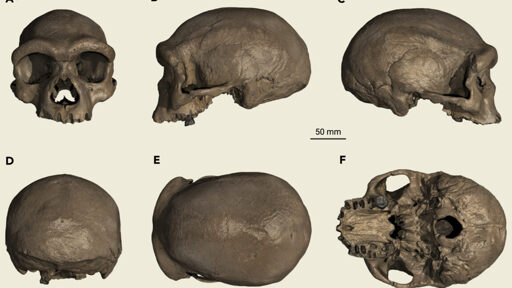- cross-posted to:
- world@lemmy.world
- cross-posted to:
- world@lemmy.world
Until now, we only had fragments of these cousins. Now we have face. Studying our evolutionary development and our sister-species is one of my favorite aspects of archeology. We’re constantly developing new information.
Side note: look up the initial presentation of Homo naledi. The leading archeologist did a phenomenal talk a couple of years ago (I think in December). It was really an exciting presentation. But I’m also pretty nerdy.



Species can’t interbreed…
That’s like, the main thing for speciation
You mean like one species? You do know wolves and dogs are still the same species if they can produce fertile offspring, right?
Like, there’s a lot of misunderstanding to unwrap here, but I’m thinking you think it’s a hard-line and a German Shepherd and a Chihuahua are the same distance from a Gray wolf…
That’s not real life, that’s the dumb downed version we teach 12 year olds in science class.
Wildly untrue, is that a typo or did you really mean that?
You really should read up on what actually makes a species a separate species, and stop just memorizing the list some racist made centuries ago…
Like, those same people said Africans were a separate species, do you believe that too?
If not, you really should take the time to learn what you’re talking about, instead of just repeating centuries old racist takes.
https://www.britannica.com/science/species-taxon
The “species can’t interbreed” thing is pretty antiquated. Many heard it decades ago and have just been repeating it like a mantra, in spite of the fact that modern biology has shown countless exceptions to this. It is an integral part of the taxonomy we know currently. There are rarely clean, orthogonal lines in nature and speciation isn’t one of them.
I knew most people wouldn’t be ready for this…
I didn’t think you’d be lining up for days to tell me that you’re one of the people I was talking about …
I’m lined up? I’m one of what people? I’m just a person interested in modern evolutionary biology, that saw you were sharing some old misinformation about speciation.
And apologies, I did you a disservice by not replying to your single citation.
At the top of the definition:
The definition of genetic species are distinct due to more than just “can they successfully interbreed”. It’s more about their genetic drift and timeline.
Your own text extraction says things like “usually” and “almost always”, because we have distinct examples of this happening over and over.
Like most of science and nature it’s messy and categories are imperfect, but we use what we got to do the science we can.
False. Have you even tried looking this up? https://www.forbes.com/sites/michaelmarshalleurope/2018/08/28/a-long-busted-myth-its-not-true-that-animals-belonging-to-different-species-can-never-interbreed/
False. Wildly false. Where are you getting this from? Cite your sources.
Based on what? Cite your sources. Otherwise you’re just spitting vibes and making up meanings for words. https://en.wikipedia.org/wiki/Recent_African_origin_of_modern_humans
They identified the right problem, but came up with the opposite of the right answer…
They’re saying because they could interbreed, it means some species can interbreed.
Because the author isn’t ready to acknowledge it means they’re the same species.
We really need to stick to one issue at a time if we’re gonna make any progress.
If you just want an argument, I’m not investing the time to help tho.
Quick edit:
Nevermind, double replies are a big red flag.
I apologize for the double reply, truly. Didn’t want to add a huge amount of text in an edit since I figured you’d reply quickly.
I’ll summarize my rebuttal thusly, and you can decide for yourself if you want to continue.
I think we’re arguing over the definition of species using two separate definitions. Encyclopedia Brittannica indicates that genetic species is a distinct definition from the definition of biological species.
Is it fair to say that genetically these homonids are extremely closely related, but had distinct populations with distinct traits and morphology over time and across large geographies due to adaptive pressure?
So then the debate centers on when or if speciation occured with each of those definitions, which I don’t think is a really productive exercise. We’re basically saying the same things just differently.
Explain mules lol
Mules are infertile. Cranky science person you are responding to does specify that in one of their rants.
A buffalo can breed with a domestic bull and produce fertile offspring
I’m not agreeing with cranky science person, just saying they specifically mentioned sterility in offspring as a thing in “cross species” mating.
We don’t know if hybrids of early humans were sterile. Since we have exactly zero mitochondrial DNA from Neanderthals, it may be the case that Sapiens fathers and Neanderthal mothers produced infertile offspring